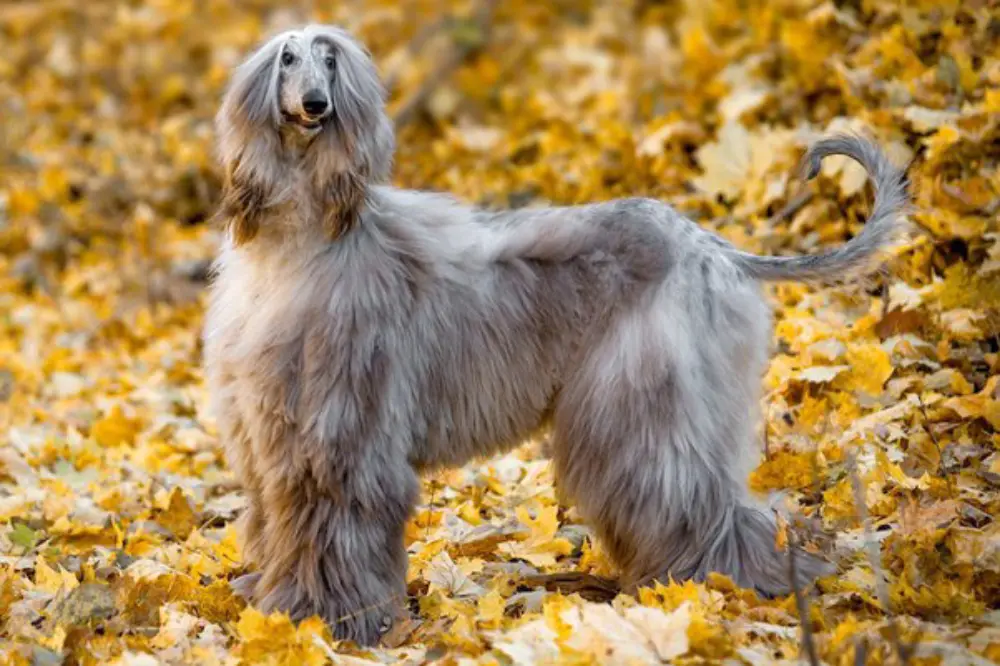Afghan Hound History
The Afghan Hound is an ancient breed derived from the group of Middle Eastern sighthounds with roots dating to the Egyptian pharaohs. Despite such illustrious roots, most of the Afghan Hound’s development is the result of its use by nomadic tribes as a coursing hound capable of providing hare and gazelle meat for the pot. The dogs often hunted with the aid of falcons, which were trained to swoop at the quarry. Generations of hunting in the harsh mountainous terrain of Afghanistan produced a fast dog that also had a good deal of stamina. Still, most of all had incredible leaping ability and skill. Its long coat protected it from the cold climate. These dogs remained isolated for centuries, hidden in the impenetrable Afghanistan Mountains. The first Afghan Hound came to England in the early 1900s: at that time these dogs were called Persian Greyhounds or Barukhzy Hounds, These dogs were a diverse lot so a standard of perfection modeled on Zardin, a particularly striking dog that described the more elegant, racy dog of today was created. Popularity grew slowly, with the dog appealing mostly to the glamour set. Popularity in the show ring was faster coming with the Afghan quickly becoming one of the most competitive and glamorous dogs in the rings. In the 1970s the Afghan became a fad breed with the public, but it has since dwindled in popularity.

Temperament
Despite its glamorous reputation, the Afghan Hound is a hunter at heart, bred to chase down game over rugged terrain. While it maintains its regal bearings inside, it needs a daily chance to stretch its legs in a safe area. Its worst trait is a reluctance to come when called. It will chase small animals outside; inside, it will coexist peacefully. Though gentle with children, it may not be playful and interactive enough with them. Described by some as “catlike,” it is independent yet sensitive, and not overly demonstrative. It is reserved with strangers: some can be timid. It has a gay, clownish side.
Upkeep
The Afghan needs daily exertion, either in the form of a long walk followed by a short sprint, or preferably, a chance to run full speed in a safe enclosed area Although its coat might make it amenable to outdoor living in temperate areas, it needs a soft bed and is better suited as a housedog. The coat requires some commitment, especially when shedding the puppy coat: most adult coats need brushing or combing every two to three days.
Health
- Major concerns: none
- Minor concerns: cataract
- Occasionally seen: necrotic myelopathy. CHD
- Suggested tests: (eye)
- Life span: 12-14 years
- Note: sensitive to anesthesia; prone to tail for years
Afghan Hound Form and Function
The Afghan is built along greyhound-like lines, enabling it to execute a double suspension gallop and run down fleet game. The comparatively short back and steep pelvis helped it to leap great heights and to turn almost in place, essential attributes for coursing in rocky mountainous terrain. The large feet gave it a better foothold and were more resistant to injury on rough ground. The silky coat protected the dog from cold nights at high altitudes. The Afghan appears dignified and aloof, with an exotic expression and proud carriage. The gait shows great elasticity and spring, and the dog moves with its head and tail high.









